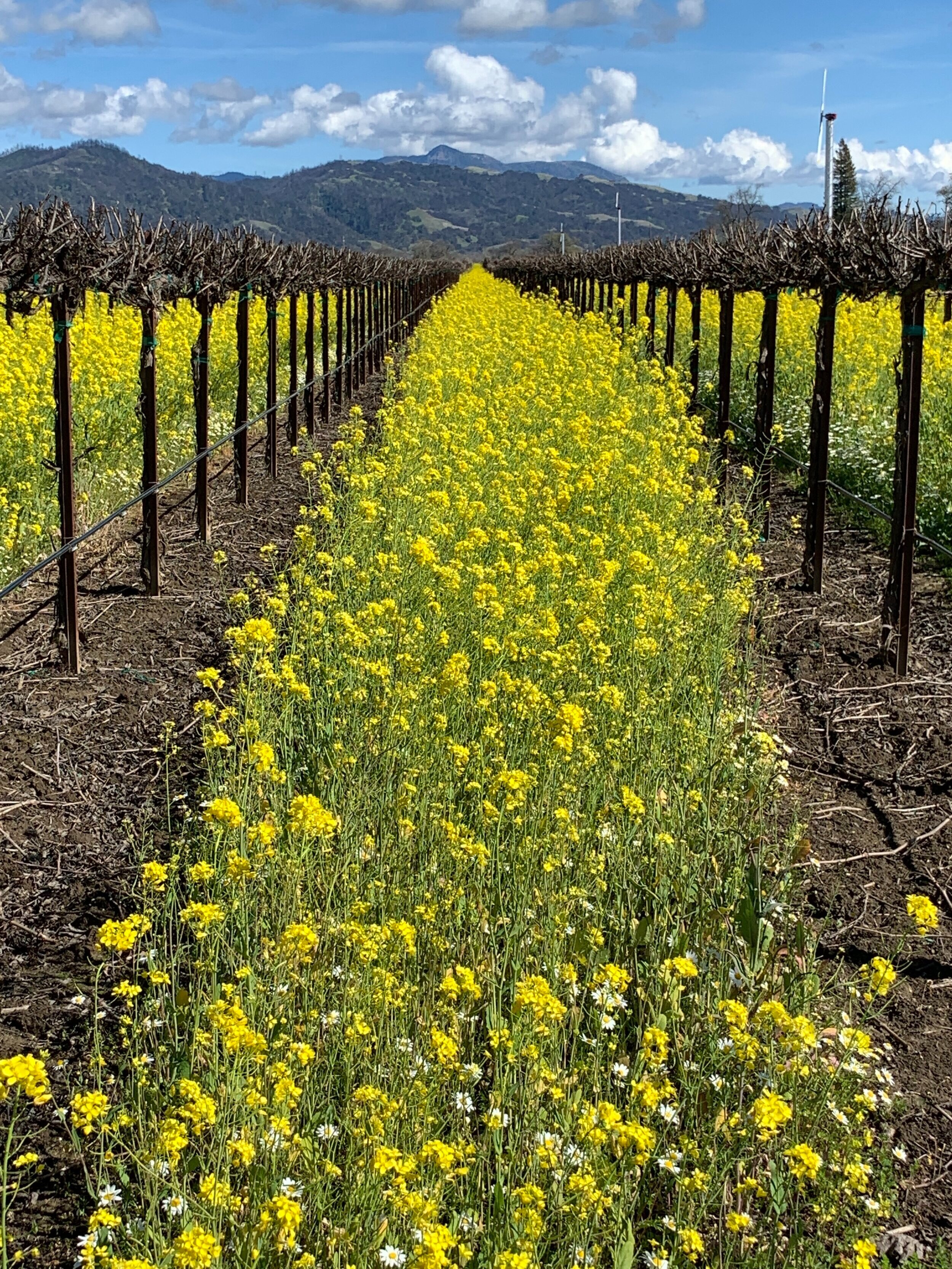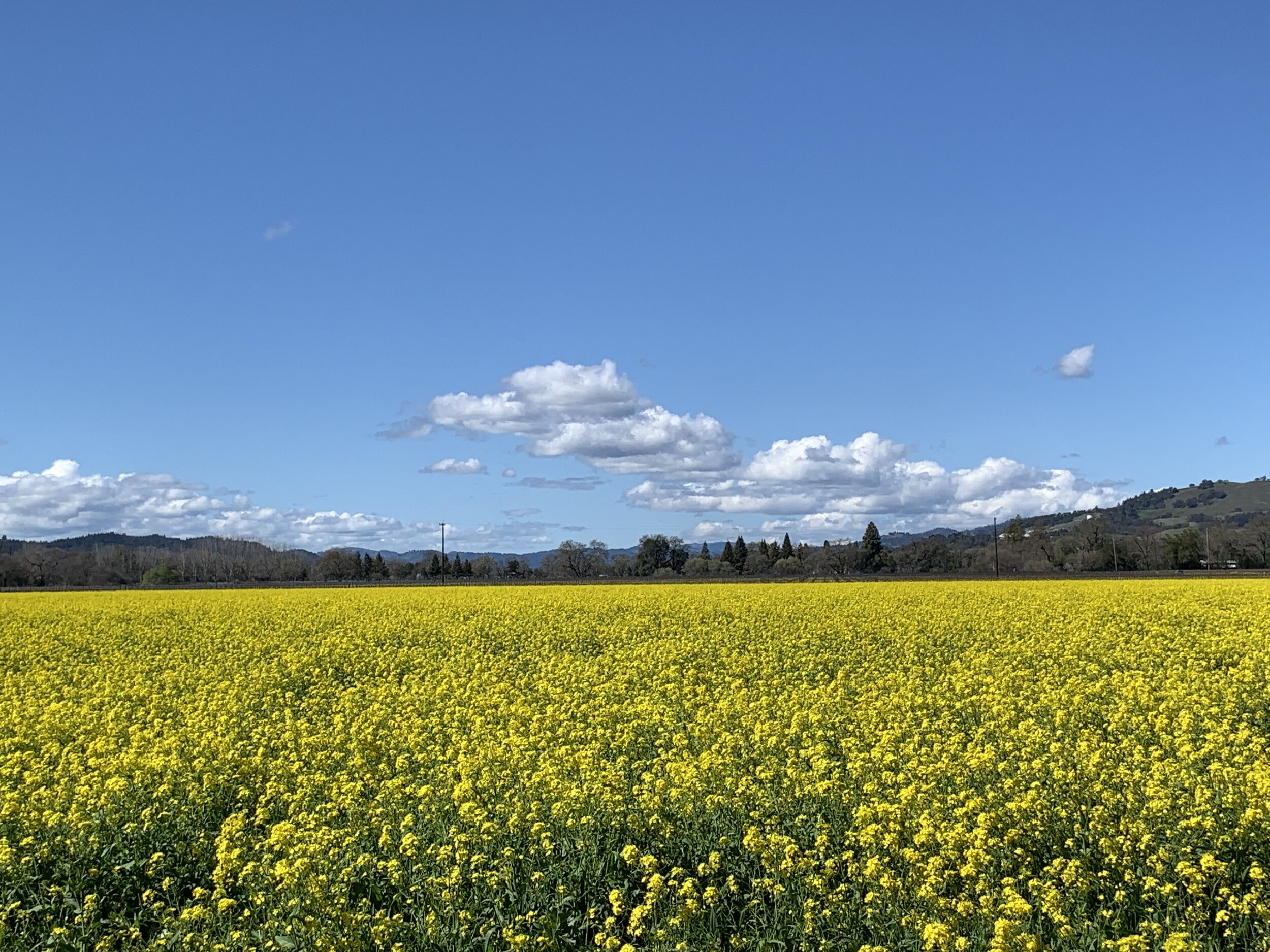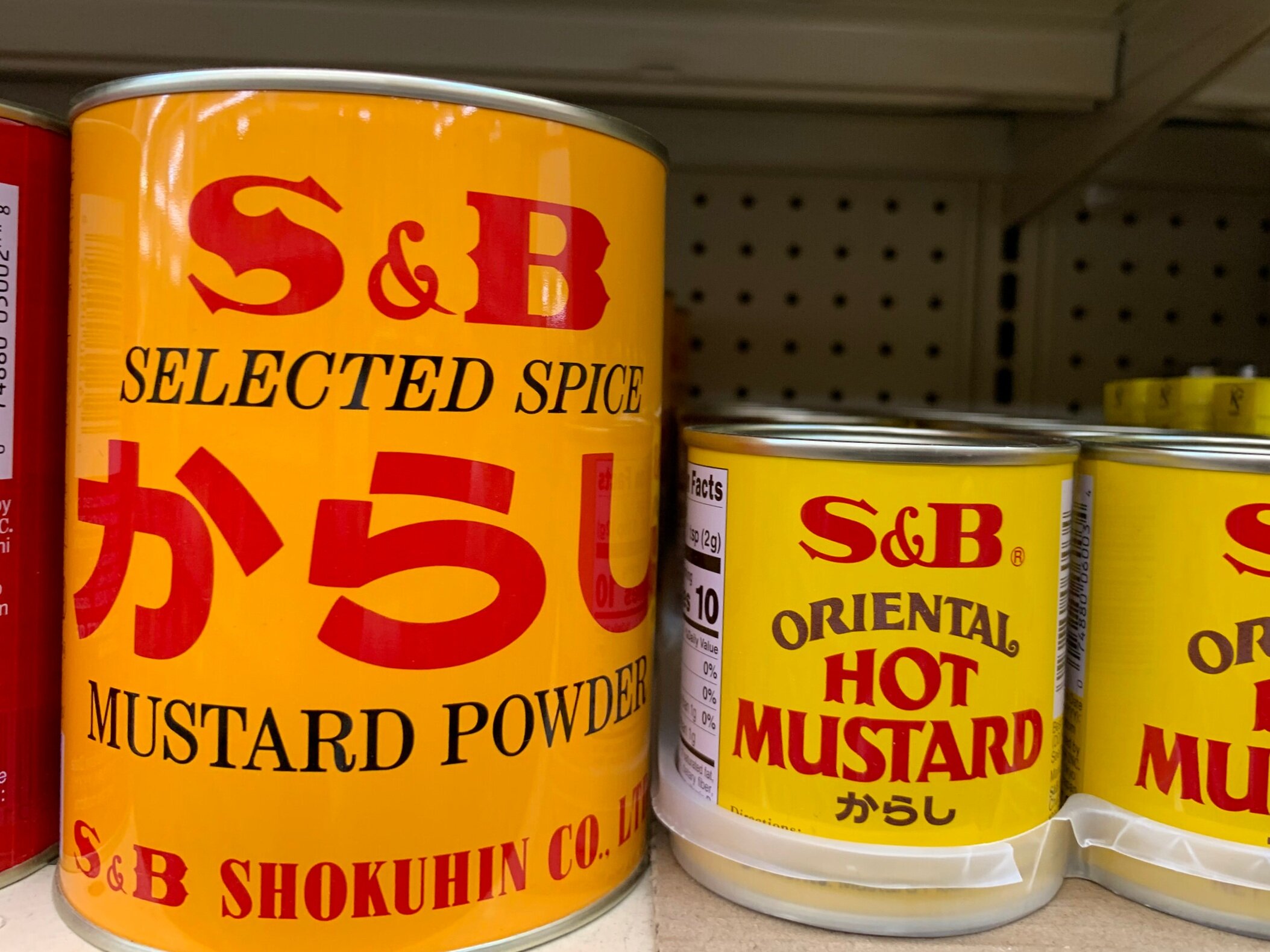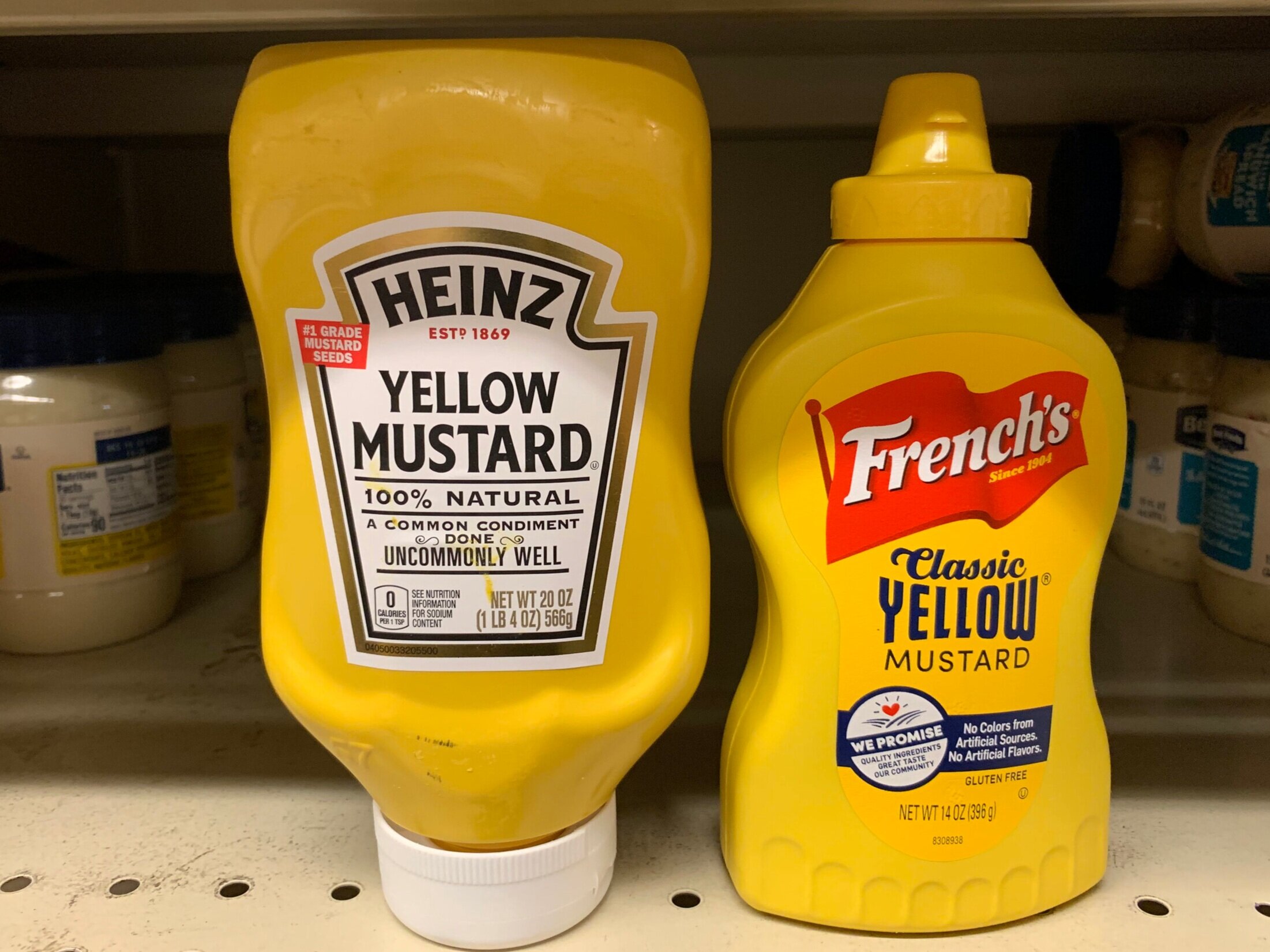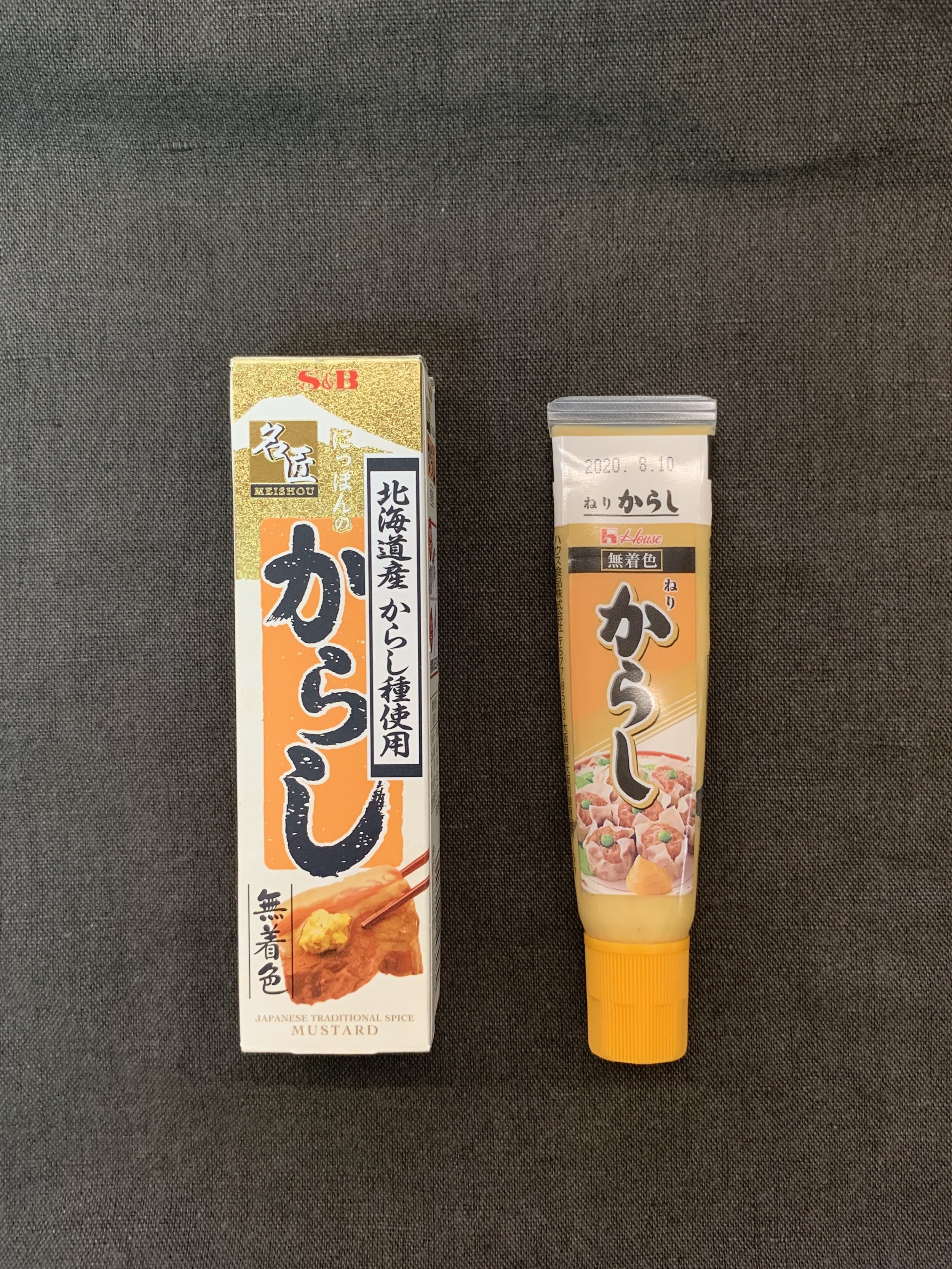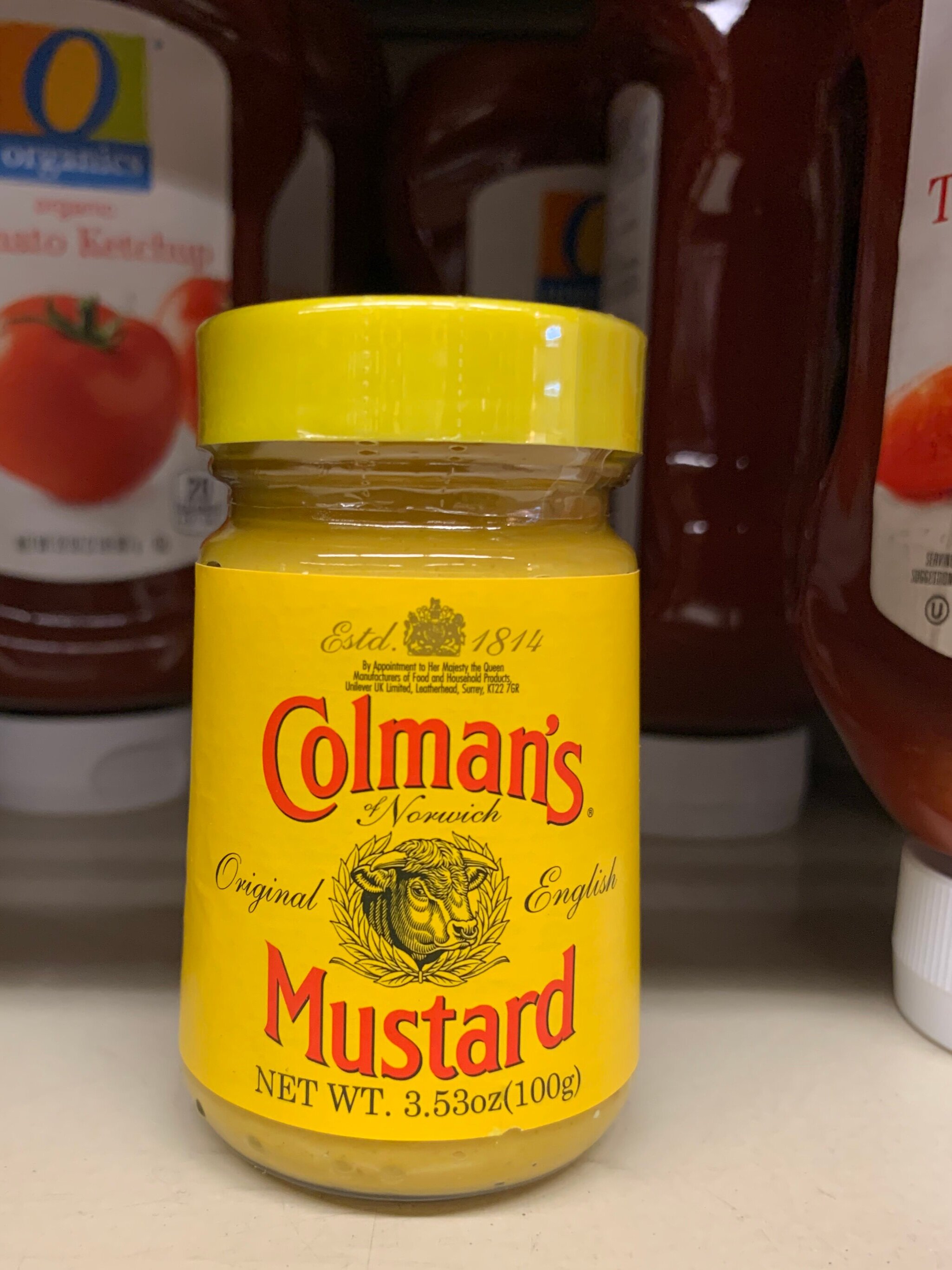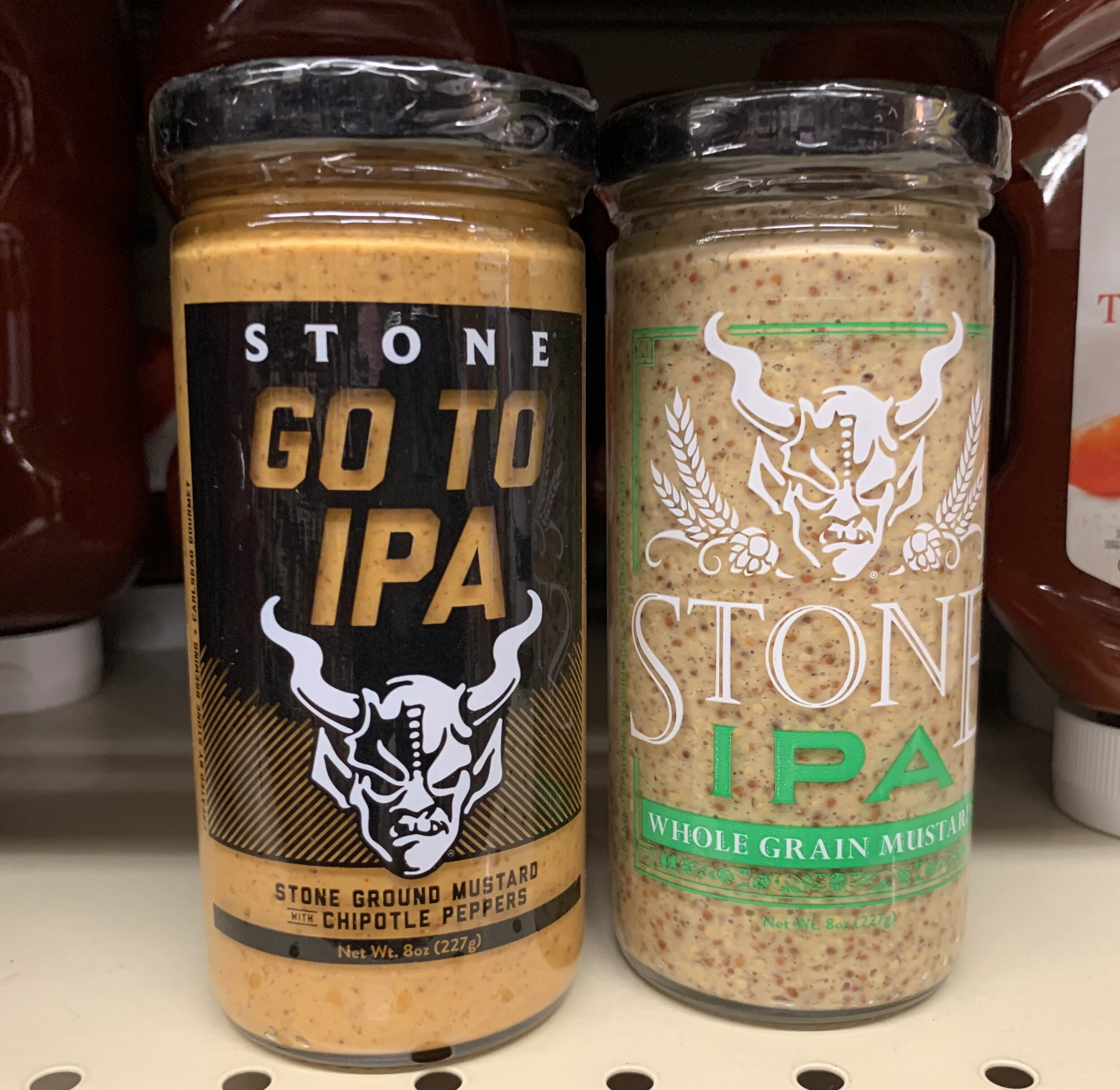"God made food and the Devil made seasoning"......the Mighty Mustard

National Geographic magazine periodically publishes stories about commodity items like gold, oil, beef and other basic trade-able products used in commerce. I know this because I worked on one of those stories. So in the same vein, sort of, I thought I'd write about basic things that one can find in one's kitchen. I'm starting with mustard. The reason being that a year and a half ago I flew back from France with a boatload of food stuff (hello 8 pounds of butter!) including french mustard, obviously not to be confused with French's mustard which is an American mustard brand. Paris in late spring was wonderful and my ultimate destination, the 'food floor' at Bon Marché Rive Gauche was a 20 minute walk from where we were staying, a flat near Luxembourg Gardens. Of course, for those who know me, it took me much longer to get there as I poked my nose in various stores, including a bakery that had an impressive assortment of fully loaded mini-quiches displayed in their window on Rue Madame and a small Poissonnerie on Rue du Cherche-Midi called Moby Dick. Ah Paris, I love you and your charming shops.
My goal, the Bon Marché Rive Gauche is a department store founded in the 1800's now part of the LVMH group and like the Japanese department stores' 'depa-chika', the Bon Marché's food department is FUN. It has changed since my last visit, no longer a food floor at the Bon Marché, but rebranded and relocated to a separate building across the street. La Grande Épicerie de Paris has a fantastic selection of EVERYTHING, besides food, they sell cooking utensils, wine, liquor, exquisite chocolates, truffles AND they have places where you can eat or have a drink just like KaDeWe in Berlin. The choices!! Just so you know, besides the one I went to on the left bank, there is a newer La Grande Épicerie on the right bank, on Rue de Passy, in the 16th arrondissement which opened in 2017.
While I was going through the aisles to pick up things to take back to the U.S., I thought I should get some Edmond Fallot mustard. Yes, you can get it in the U.S. but not as common as Maille or Grey Poupon. As I turned the corner to the moutarde section I was confronted with a WALL of mustard, so many types, so many brands. The mustard I was after, Edmond Fallot, had at least 6 or 7 choices. I wasn't interested in the pink, purple or green ones, I faithfully stuck with the classic, dijon mustard. I also picked up a bottle of moutarde de bourgogne, identical to moutarde de dijon, except for the color was slightly pale and I didn't give it much thought about the difference at the time. After I returned home I looked up the two mustards, dijon and bourgogne, and wouldn't you know it, there's not much information comparing the two in English. The fact that Dijon is a town in the Burgundy (Bourgogne) region doesn't help. So, I thought some more research was in order and began poking around a bit to learn more about this everyday condiment, the mighty mustard.
First of all, what IS mustard? It is a plant related to the cabbage and other cruciferous vegetables categorized under the family Brassicaceae. The seeds of this herbaceous plant is used in cooking, to produce edible oil, or crushed to make a paste. Some types of mustards are eaten as vegetables. The three plants grown for their seed to make the condiment mustard are:
Sinapis alba -white or yellow mustard (small plant, largish seeds) native to Europe, pungent and bitter in flavour
Brassica nigra -black mustard (tall plant, smaller black or brown seeds) native to Europe, piquant flavour
Brassica juncea - brown mustard, also know as Indian or Chinese mustard (reddish brown to dark brown seeds) native to Asia, piquant flavour, and their leaves are consumed as vegetables mainly in India and China
Of the three, almost all commercially cultivated mustard seeds worldwide are from b.juncea and s. alba. B.nigra grows very tall and the seeds tend to drop and therefore is considered inefficient for ideal mechanical cultivation. The names are somewhat misleading; what we call or know as black mustards seeds for recipes in cooking is actually b. juncea, and NOT b. nigra.
And what makes it pungent and hot? Basically, adding water creates a chemical reaction. The crushed seeds in presence of water releases volatile essences which give distinct flavor and heat. In more depth, the seeds have an enzyme called myrosinase (sometimes called thioglycosidase) and various glycosides. Glycoside is what makes cruciferous vegetables bitter or sharp, and imparts that slight whiff of sulfur. When the outer coating of the seeds are broken and water is added to it, the enzyme (myrosinase) breaks down the glycoside and converts it to isothiocyanate (pure mustard oil). This is what makes it hot, volatile, and sharp. This is why if you eat really hot mustard, it doesn't help to drink water, it makes it worse. The same goes for wasabi and horseradish because they are related. Exhaling through your mouth helps. But, by adding acid like vinegar or wine stabilizes and stops the chemical reaction. So does cooking (heating), like in Indian food recipes, the process mellows it and imparts a nutty flavor. If acid or heat is added to freshly ground seeds, the flavour develops without the reaction only preserving the pungency. The condiment mustard is made with crushed mustard seeds, a type of acid such as vinegar, wine, or lemon juice added and mixed to make a paste -and to that base various things are added to make unique versions.
So circling back to the difference between my Dijon and Burgundy mustard, I found out that it is really about where the ingredients came from and where they were produced. The Burgundy mustard is designated as IGP (L’Indication Géographique Protégée), or PGI (Protected Geoographical Indication) in English, similar to the more familiar French AOC (Appellation d’Origine Côntrolée), or the Italian DOP (Denominazione di Origine Protetta). The designation PGI was granted to protect the mustard produced in the French Burgundy region much like olive oil in Italy, because today, Dijon mustard is being produced all over the world and is considered ‘generic’. In order for mustards to be labeled Moutarde Bourgogne, it has to be made with seeds grown in Burgundy and use AOC Burgundy wine. This protects the agri-business in the region and it guarantees the origin of the Dijon/Burgundy mustard. So THAT is the difference between the two mustards I purchased, now I know.
FYI, a few more interesting tidbits about mustard plant, seeds and the condiment:
1. It's old, very old. Mustard cultivation is mentioned by Herodotus in 5th century BCE, and it has been found in various archeological sites including Chanhudaro, Sindh, around the Indus valley; a Mycenaen site in Greece; and most likely the oldest seeds found in vessels at the site of Banpo village in China, carbon dated to 4800 BCE.
2. It was familiar even back then. The seeds are mentioned in both early Buddhist and Hindu texts, and also mentioned in all three Abrahamic religions. Which leads us to believe that it was something everyone could relate to.
3. It travelled. The Romans brought s.alba and b.nigra to Gaul, Burgundy, Germany, Spain and Britain. Where in most places, they started growing wild. The Palestinians took mustard seeds to Egypt where they made a condiment made with the crushed seeds. And the Spaniards brought the seeds to California in the late 1700s.
4. It's been made in the same way, well almost, for a very long time. Columella first wrote about the preparation in 42 CE in De re Rustica, and then sometime in 4th century CE, Palladius wrote about preparing mustard with 'crushed seeds, honey, oil and strong vinegar' which is more less how mustard is made today.
5. Poor man's pepper. Like pepper, mustard had preservative qualities. But unlike pepper, which had to be brought over from far off places, mustard was easy to grow and readily available in Europe, so it was one of the cheapest spices.
6. It is nature's way to get rid of pests. Myrosinase is an enzyme found in plants that herbivores stay away from, and glycoside are natural chemicals that allow the plants to have a defense against pests and diseases. This is one of the reasons mustard is used as a cover crop in agriculture. And I discovered that there is a product called Mighty Mustard sold to farmers as a biofumigant. You've got to love nature.
7. It had 'medicinal' purposes. Not very common today but in the past, mustard had uses besides for cooking. The medicinal properties of the plant were highly valued in the Middle Ages and until the end of the 19th century, mustard plaster was a common remedy for aches and pains and chest congestion. Mustard oil was used to massage and relieve rheumatism and arthritis. There were many other uses, too much to list here but we know that the seeds actually aid in digestion and also have emetic properties. The white seeds are a good laxative. It is still used in homeopathic and Ayurvedic medicine, and Dr. Singha's Mustard Bath, is available for sale today. Even now, Bengali women use the oil in their hair as a tonic to keep their hair shiny and healthy.
8. It was used in wars. Mustard gas or sulfur mustard was used in modern warfare but it has nothing to do with mustard plant/seed, this synthetically developed weapon was created in the late 1800's. Apparently there are various ways to synthesize this weapon; mixing sulfur dichloride with ethylene or mixing disulfur dichloride with ethylene and it is called mustard gas because it smells like mustard and or horseradish. But, back in 4th CE, the Chinese burned clumps of dried mustard creating toxic smoke and channeling the smoke towards their enemies. Not to be tried at home.
9. They had names for people in the mustard trade. First, there were mustardarius who supervised the cultivation and preparation of mustard in medieval Europe. The first record of a mustard maker is from a 1292 census in Paris! And then as mustard paste as a condiment became popular and the privileged class started using it, there was a move to regulate the profession. A person who made or sold mustard was called, moutardier.
10. There are various types of mustard condiments. Not all mustards are hot, spicy or sinus clearing. They vary by color, texture, and flavour. It is flavoured in many ways mixed with tarragon, basil, garlic, horseradish, sugar, honey and chili etc.
American mustard, like French's, is used to put on hotdogs and sandwiches, mild in flavour and bright yellow in colour. The colouring is from added tumeric.
The northern Italian mostarda is more like a fruit relish in mustard flavoured syrup.
The Germans have several types of mustard, but their 2 most popular types are the Dusseldorf which is hot and Bavarian which is mild, used on their wursts (sausages). Speaking of Dusseldorf mustard, in one of his still life series, Van Gogh painted ABB brand Dusseldorf mustard in his 'Still Life with Bottles and Earthenware' painting.
The most famous British mustard is HOT. Colman's from Norwich which was granted the Royal Warrant to Queen Victoria is still used in the royal household today. Often accompanying roast beef, you can buy it in the jarred paste form or the powdered version in tins. My father insists on asking for mustard at restaurants in the U.S. on the rare occasion that he orders a steak. And of course, most American restaurants do not carry hot mustard (he's after Colman's, specifically) so I started carrying around a small bottle of Colman's in my purse when dining with him in the U.S.
Like the English mustard, Chinese and Japanese mustards are extremely hot. Used as a condiment to give foods a kick like spring rolls, natto, and oden. And like in Britain, Japanese and Chineses mustard is sold in paste form and in powdered form. Instructions for Japanese powdered mustard is to add a little water and stir. Warm water 40 C / 104 F is optimum to bring out that nasal clearing pungency. A proprietor at a restaurant I used to frequent in Tokyo told me that mustard prepared by a short tempered person is hotter and it will make you cry...
France has numerous mustard varieties, but it can be divided into 3 major categories: Meaux (or moutarde ancienne) - a mild mustard made with vinegar and unmilled coarsely crushed seeds; Bordeaux - purplish or brown in color, made with grape must and contains sugar and herbs; and Dijon - pale yellow, made with white wine or verjus, stronger and without extra flavouring added. The expression, 'Il se prend pour le moutardier du pape' roughly translates as 'to think of himself as the Pope's mustard maker' refers to a person who is self-important, vain or has a high self opinion of. One story for the origin of this expression is attributed to Pope Clement VII who loved mustard so much that he had mustard with every meal and to gain his favour people went to great lengths to present him his favourite condiment. Another possible story is of Pope John XXII appointing his dull-witted nephew as (the newly created) chief mustard maker as the nephew wasn't bright enough to hold any other position.
11. It's used in cooking. Mustard paste like dijon or the more coarse types are used in marinades for meat and fish, or used to make vinaigrettes. It is added to cooking stock, ragout, blanquette and mixed to make savory sauces. One of our guests' favourite dishes and in frequent rotation at our home is 'saucy pork'; twice cooked pork tenderloin with a mustard sauce. But there's more, the seeds are used in almost all types of savoury cooking in southern, southwestern and eastern India. Northern Indian cooking uses cumin as their main spice and they don't use mustard seeds as much but they do use mustard greens. And in the Bengal region a mustard paste is used for their cooking. Chinese and Japanese are more about mustard greens and mustard related vegetables and not so much about cooking with mustard seeds or mustard sauce.
12. Napoleon's mustard of choice was Grey Poupon. In 1860, Maurice Grey became the official mustard supplier to Napoleon. The 3rd, as in the first Napoleon's nephew. In 1866, Maurice Grey and Auguste Poupon joined forces to expand production and produced a whole grain mustard in Dijon, the fave of the Emperor. It is now owned by Kraft Heinz although their mustard for sale in Europe is still manufactured in France. And interestingly, because of Grey Poupon's 'one of the finer things in life' commercials, with lines, "Pardon me, would you have any Grey Poupon?", and "But of course!" it seems to be the mustard of choice among US rappers since the 90s*.
*FYI more about Grey Poupon in Hip Hop :
https://www.vox.com/videos/2016/10/12/13250360/grey-poupon-in-hip-hop
https://www.xxlmag.com/hip-hop-lyrics-grey-poupon/

